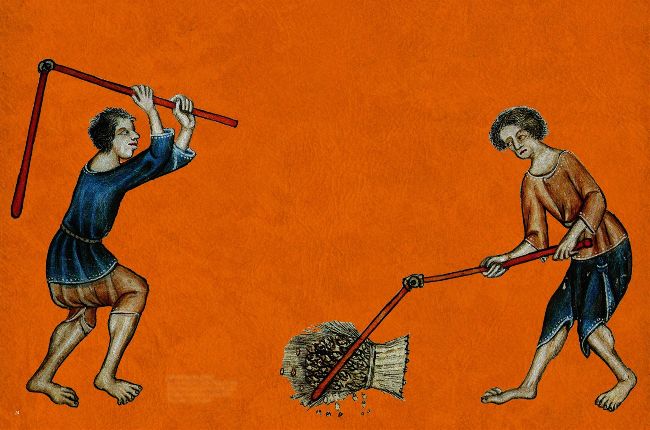Medieval peasants
A typical medieval peasant? There’s no such thing
If modern film and TV depictions are anything to go by, ordinary people in the Middle Ages either enjoyed lives of rural bliss or unrelenting drudgery. Yet, writes Duncan Hardy, the truth is far more complex (and fascinating) than that

Labouring the point This scene from the Luttrell Psalter, a richly illuminated manuscript from c1330, gives an idealised insight into everyday life in 14th-century rural England
TOPFOTO
Judging by most film and TV depictions of Europe in the Middle Ages, one peasant looked much like another. A face, probably grubby, peeks out from beneath a hood; below, the body is clad in a tunic and woollen hose. Shoes – if feet are shod at all – are spattered with mud, from the farmyard or the quagmire of a road along which they’re tramping. Such was the lot of the ordinary man or woman.
Whether in Britain or Brittany, Essex or Aachen, a common assumption is that the everyday lives of ordinary medieval people were fairly homogeneous – that their status, wealth, health, diet and, yes, clothing was largely the same across much of the continent. Yet even a brief look at records and chronicles from that period – which, of course, covers a vast timespan – gives the lie to that idea.
Take the denizens of Ruislip, now a district in west London. In 1246, it was a small farming community in Middlesex. Here lived Roise, the miller’s wife; Nicholas Brakespear, a freeholder who flouted the local authorities’ orders; and Hugh Tree, whose flock kept getting into the lord’s garden. If you wandered through 13th-century Ruislip, you might also meet brewers such as Alice, the widow of Salvage; or Agnotta, the amica (“friend”, or mistress) of the shepherd.
Some locals were richer than others. One, Roger Hamo, was sufficiently wealthy that he could afford to pay 20 shillings for a jury of 12 local men to investigate his rights to a plot of land claimed by another man, Gilbert Bisuthe. The authorities’ specification that some peasants, such as Nicholas Brakespear, were freeholders implies that others were tenants or serfs. Some people got along, but others got caught up in disputes – take William Slipper and the Widow Druet, for example, who argued over a hedge boundary between their properties.
We know about the lives of these people because they were mentioned in the court records of Bec Abbey in Normandy, which was the lord of Ruislip’s manor. A document prepared by officials records information about justice administered to inhabitants of the manor on “Tuesday after Ascension Day [22 May]” 1246, including Roise, Nicholas, Agnotta and the others. Today they would all be lumped together as “peasants” – though this snapshot of one community at one moment in time reveals that generic label encompassed a range of people with quite different statuses and life experiences.